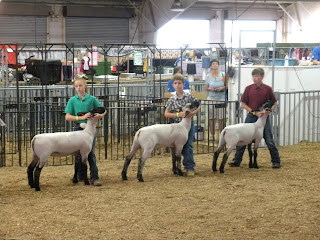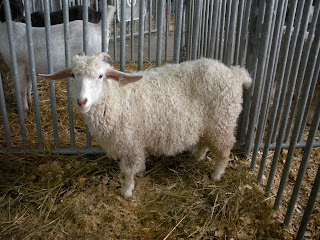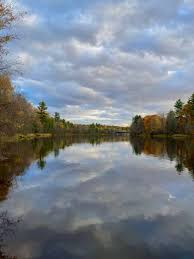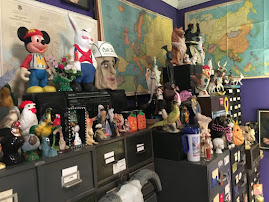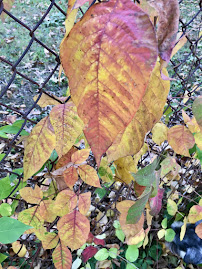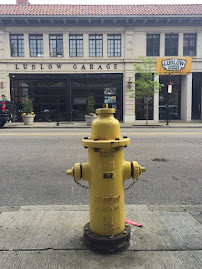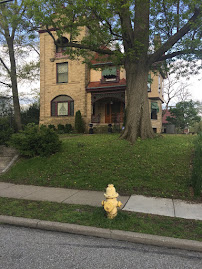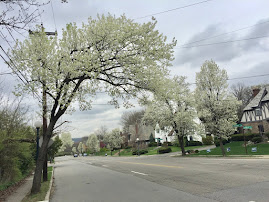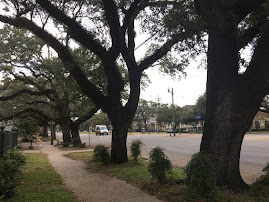Katja
and Jacques at Faber’s Fabrics in Ann Arbor (circa 1962)
Dear George,
Katja’s and my life together
is sort of sedate nowadays compared to years ago. I think of the summer of 1962 when we set off on an
improbable road trip from Michigan to the West Coast. I’d just finished my second year of grad school. Katja, then as now, had an intense
desire to travel, and she’d scrimped and saved from her Faber’s Fabric job in
downtown Ann Arbor and put together about $200 to finance a five-week trip to
the Seattle World’s Fair. Though a
budget of six dollars a day seemed tight, we decided we could manage if we
camped along the way.
We left from Menominee in
late June. We borrowed my
grandfather Guy’s 1930’s white canvas tent which had been stored for many years
in my folks’ garage. It no longer
had poles or stakes, so I cut these from alder trees on our back lot. On the day we departed, my dad lent us
his Standard Oil credit card to cover our gasoline expenses. It was a generous and thoughtful act –
we would never have made it across the country without it. Katja hadn’t camped out since being a
Girl Scout, and she was exceedingly anxious. My mother reassured her that I was a very experienced camper
and that she had nothing to worry about.
That helped at least a bit.
We headed west and drove
through Iron Mountain where we stopped to look at the giant ski jump, deserted
in the early summer heat. We
stopped for our first night at a state park in the Minnesota lake country. I pitched the tent, and Katja prepared
dinner. She’d just finished the
salad when she accidentally knocked the bowl off the picnic table. She burst into tears. I scooped it up as carefully as I could
and explained that when you’re camping it’s not unusual to have a little dirt
in your lettuce. Katja was
relieved, and that was the only emotional camping crisis of the trip.
After passing through the
Badlands and checking out Mount Rushmore, we drove west through Canada. There was a doctor’s strike going on in
Saskatchewan, so there were no medical services available of any sort. Though we were healthy enough, we
fantasized about getting into a car crash with no hospitals or doctors’ offices
open. It put us on edge, and it
seemed to take forever to get out of the province. Then into the beautiful Rockies, where we stopped at Banff
and Lake Louise and enjoyed a dip in the hot springs.
Seattle
World’s Fair 1962
In Seattle we stayed with our
college friend, Dave S., who had introduced the two of us in Milwaukee five
years earlier. The World’s Fair,
with the Space Needle, monorail, and all its ultra-modern structures and
exhibits, was thrilling, and we spent a couple of days taking it all in. Then we drove down the Oregon coast,
which was stunning, and we camped on the beach. At dawn the tide came in, the Pacific Ocean began flowing
into our tent, and we had to pull up the stakes and vacate in the early morning
light.
Agriculture Dept. rangers
were checking cars at the California border to insure that no foreign
vegetation was being brought into their pristine state. They spotted our Michigan alder tree
tent poles, and, despite my protests, we had to surrender them. We drove a few miles, pulled over at
the road’s edge, found a fallen evergreen tree, and cut some pure California
branches to make new and legally approved tent poles. In San Francisco we stayed with Mary and John P., Mary
having been one of my childhood
friends in Menominee. They were
very gracious, and I enjoyed showing Katja around the beatnik landmarks in
North Beach where I’d hung out as an aspiring novelist in 1959.
We left California and drove
through the Nevada desert at night, scared from seeing no cars for hours and
worried that grizzled prospectors would be discovering our sun-parched bones in
the sand. We spent an hour in Las
Vegas at 3 or 4 a.m., but had no extra change to gamble away. The Southwest was exciting, with all
the Hispanic and Native American presence -- the closest thing to a foreign
culture that we’d ever experienced in the U.S. We took in the Grand Canyon, Taos, the Hoover Dam, Santa Fe,
and numerous other sites. It was
boiling hot, and Katja, against all her inclinations, eventually broke down and
bought a skimpy little bra-like mini-top to wear in the midday heat. She looked very cute, though definitely
embarrassed. We visited our grad
school friend Dodd B’s ranch outside of Albequerque, and he was pleased and
proud to show off the magnificent desert and mountain surroundings.
Leaving Albequerque, we drove
into a state park in New Mexico after 10 p.m. Too late to register for a campsite, we simply set our
sleeping bags on the ground and slept under the stars. In the morning a guy from Texas came by
and asked if we’d seen the “bahrs”. We didn’t know what he was talking about,
but, after a few more tries, we discovered that he meant “bears”. He said that they came every night to
try to get into the sealed garbage pit containers on the ground. It turned out that we had been sleeping
on top of the garbage pits, exactly where the pack of bears had been prowling
around. We were relieved to have
not been eaten alive.
We headed northeast and
stopped in Denver to fill up the car with gas. I gave the guy our Standard Oil credit card, but, to my
dismay, he said that it wasn’t valid in Colorado. He showed me on the card where it said that. We had to pay cash, but it was the last
four dollars that we’d set aside for the remainder of our trip back to
Michigan. No more campgrounds, no
more food. In Nebraska we simply
pulled our car over in a big field and slept in the car overnight. In the middle of the night I went out
to relieve myself. As I was doing
so, I heard the pounding of hoofs, and I saw in the moonlight that a large
stallion was charging toward me. I
raced back to the car and jumped in just in time. We drove and drove nonstop and finally we were back in Ann
Arbor, glad to be home again but full of good memories.
I still think camping road
trips are the best vacation of all.
I asked Katja last week if she’d like to go camping at Lake Cumberland
in southern Kentucky, or perhaps to the Indiana dunes on Lake Michigan. She just shook her head. But after a pause she said that she’d
like to go on a camping road trip to the West Coast. I was amazed.
At first that seemed beyond possibility to me. But then I thought, maybe we could do that again. We’ll have to see.
Love,
Dave
G-mail Comments
-Jennifer M (7-30): I love this story. I hope your trip to the farm is great!





















